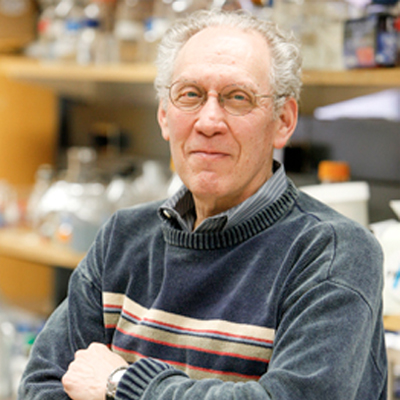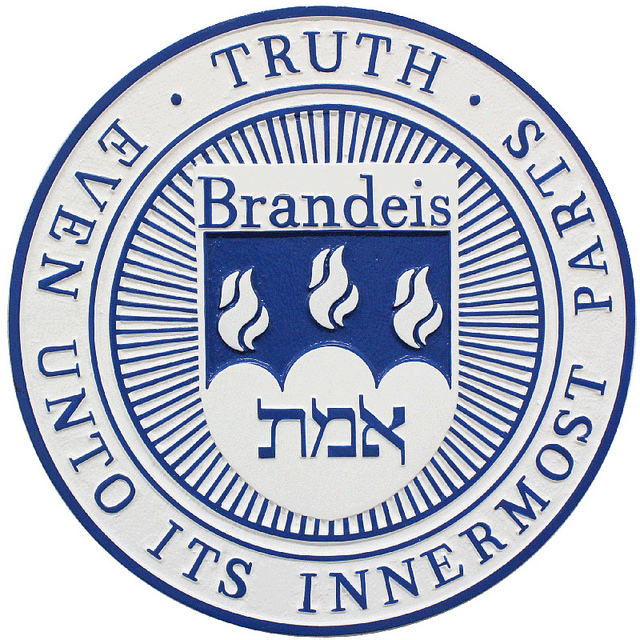Illuminating the ways that cells repair chromosome damage and avoid disease
From the time that we begin as a fertilized egg to having a body of 50 trillion cells, the DNA sequences of our chromosomes remain incredibly stable. This general problem, known as “genome stability,” helps to promote health over the lifespan. In contrast, in diseases like cancer, cells exhibit very high levels of genome instability. Dr. James Haber, Professor of Biology and Director of the Rosenstiel Basic Medical Sciences Research Center at Brandeis University, uses yeast cells as a model organism to understand how cells accurately repair their broken chromosomes, but also what happens if these front-line repair processes fail. By studying yeast cells, where the both accurate and less precise repair mechanisms can be studied in much greater detail than in human cells, he and his team are identifying key steps in the process. It is then possible to evaluate human cells to find out how normal cells preserve chromosome integrity and what safeguards are lost in precancerous cells. Therefore, Dr. Haber’s fundamental research and development of sophisticated tools is advancing science towards an understanding of how cells preserve chromosomes integrity and furthermore to provide models that can be implemented to prevent disease.
Dr. Haber’s work is notable for the development of novel genetic and molecular biology assays to understand how DNA damage is repaired in living cells. The cell lines he has developed have been provided with no strings to more than 100 labs around the world. In fact, his collaborations with over 50 other labs during his career in addition to close mentorship of his talented undergraduate students, graduate students, and postdocs, have continually provided insights that have led to advances in understanding and treating human disease. Awarded the Genetic Society of America’s Thomas Hunt Morgan medal for lifetime achievement in genetics, and elected as a member of the US National Academy of Sciences and the American Academy of Arts and Sciences, Dr. Haber is at the forefront of analyzing the way defined chromosome breaks are sensed and repaired, in unprecedented detail.
Current research includes:
-
DNA Damage: Model organisms and humans respond to DNA damage in almost identical ways by triggering a signaling cascade known as the DNA damage checkpoint. When a protein recognizes that there is a broken chromosome, a signal is propagated that tells the cell not to divide. Dr. Haber is interested in understanding how such signaling is turned on, but especially, how these alarms are maintained but then turned off if the damage is repaired. He and his team have created new cell lines in which key kinase proteins can be quickly inactivated after the damage signal has been turned on, in order to learn which of these proteins are needed to sustain the signal and eventually to turn it off.
-
Detecting Protein Modifications: Dr. Haber’s lab has discovered that mutations of specific sites in a key signaling protein called ATR creates a situation in which the cascade turns on normally but then cannot be turned off. However, when the sites were changed to mimic a normal modification produced by the ATR protein itself, the signal cascade turned off rapidly. These behaviors suggest that two sites in the ATR gene are the key to regulating the activity of this essential protein kinase. To prove that these sites are important regulators, Dr. Haber and his team are developing immunological approaches to detect these modifications.
-
Uncovering Key Genes: DNA damage provokes cells to degrade proteins that would otherwise propel the cells into mitosis. Restraining cell division allows time for the cell to repair the damage. There are two degradation processes, proteasomal degradation and autophagy. Dr. Haber’s lab has identified genes that are specifically important in turning on the autophagy response after creation of an unrepaired chromosome break. He now hopes to study which nuclear positions are transported to the vacuole for degradation by autophagy after DNA damage is inflicted. It is already clear that human cells respond in similar ways to damage by triggering these same pathways of protein degradation. By uncovering new genes essential for this process in yeast , Dr. Haber hopes to uncover the human versions of these genes and to promote the study of how these genes protect human cells from disease.
Bio
As a senior in high school, Dr. Haber won a televised science contest and was awarded a four-year summer research job with Westinghouse. After completing his undergraduate degree at Harvard in 1965, he then went on to pursue a Ph.D. at UC Berkeley, where he studied protein-protein interactions, specifically how oxygen is bound by human hemoglobin (his own).
As he began research in his own lab Dr. Haber became fascinated by problems of gene regulation and chose to study them using the then emerging experimental system of budding yeast. He soon latched on to the specific question of how yeast cells can rapidly switch their mating-type so that a single cell of one sex type can give rise in a few generations to an equal number of cells of both sexes, which can then conjugate to form stable diploid cells. He has since made major contributions in understanding this process, which is one of the best-studied examples of programmed rearrangements of DNA sequences, created by a specific chromosome break.
In 2010 Dr. Haber was awarded the Thomas Hunt Morgan Medal from the Genetics Society of America for his lifetime achievements in genetics. However, Dr. Haber is quick to clarify that although he has received a lifetime achievement award, “It doesn’t mean his scientific life is over!” He is member of the US National Academy of Sciences and a fellow of the American Academy of Arts and Sciences, elected the same year as Dustin Hoffman.
Aside from research, Dr. Haber enjoys biking, hiking and travel and is a serious photographer. Additionally, for almost all of his adult life, he has sung in amateur choruses. In fact, early on in his singing career, he hired a talented opera singer as his voice teacher. It turned out that he and his singing teacher had more in common than just an interest in performance, and Dr. Haber married her shortly after.


